Unique Programs of HEAL Movement
Coastal Sand Dunes
Restoration and Conservation of Costal Sand Dunes for Biodiversity and Disaster Risk Reduction
Introduction:
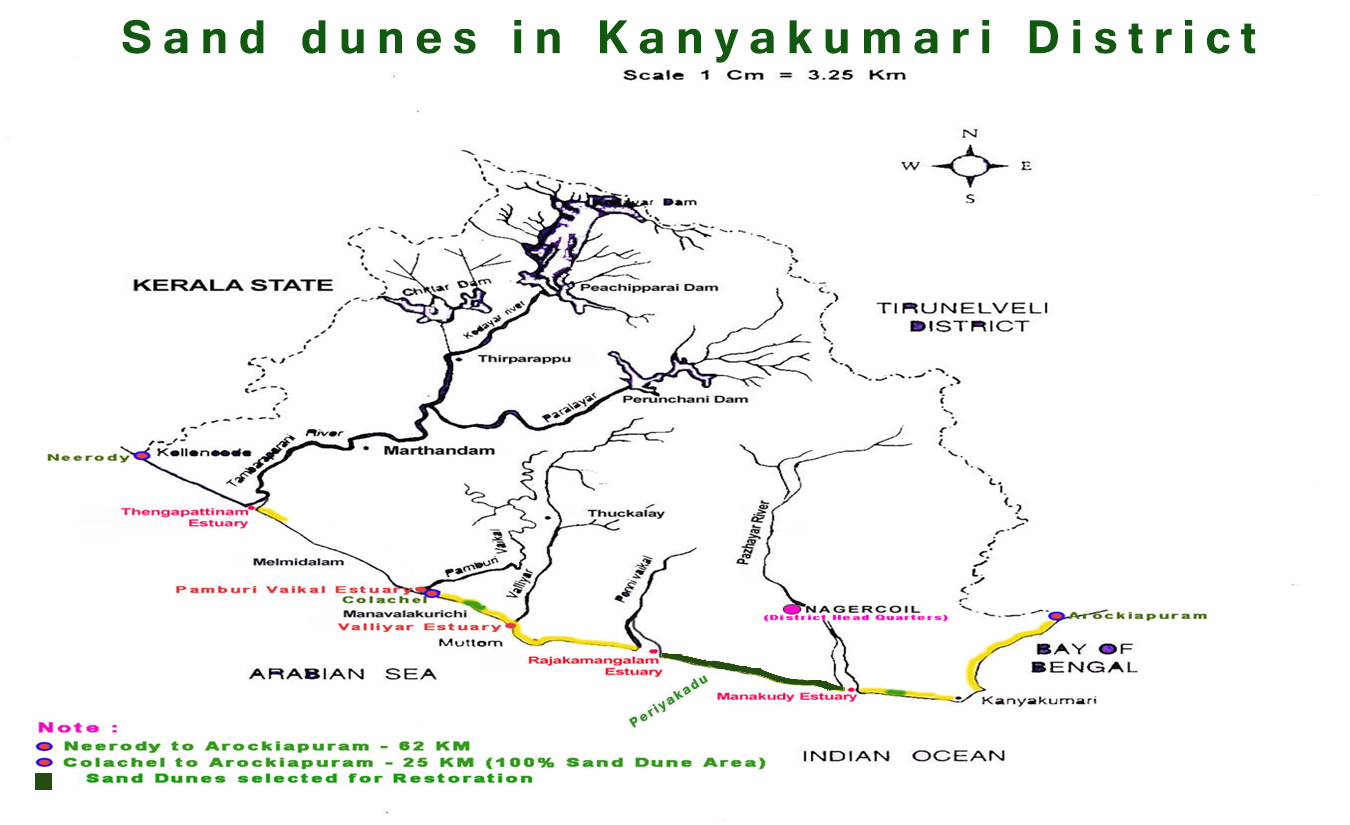 Coastal sand dunes are one of the important landmarks of Kanyakumari district. A survey of coastal villages affected by the 2004 tsunami found significant damage in areas where sand dunes had been destroyed lifestyle changes. The HEAL Movement, therefore, involved people to be aware and active in taking into account the destructive factors of sand dunes to protect them from natural disaster.
Coastal sand dunes are one of the important landmarks of Kanyakumari district. A survey of coastal villages affected by the 2004 tsunami found significant damage in areas where sand dunes had been destroyed lifestyle changes. The HEAL Movement, therefore, involved people to be aware and active in taking into account the destructive factors of sand dunes to protect them from natural disaster.
Taking the Periyakadu sand dune that had survived the devastation as a model intervention area, project activities were carried out over a distance of eight kilometres.
Sand dunes were later perceived as one of the most important factor for coastal biodiversity conservation and livelihoods of people. This was followed by the preparation / drafting of relevant documents.
Objectives:
- To create awareness among key stakeholders on the importance of coastal sand dunes and the need for preserving;
- To form Greening Committees at village level and federate them at district level;
- To train the community members on restoration, conservation and management of costal eco-systems;
- To identify suitable plant species;
- To propagate the importance of sand dunes among communities;
- To involve the community members in advocacy and lobbying to protect sand dunes from sand mining; and,
- To motivate the student community, local stakeholders, general public and the Line departments on the importance of preservation and conservation of costal sand dunes.
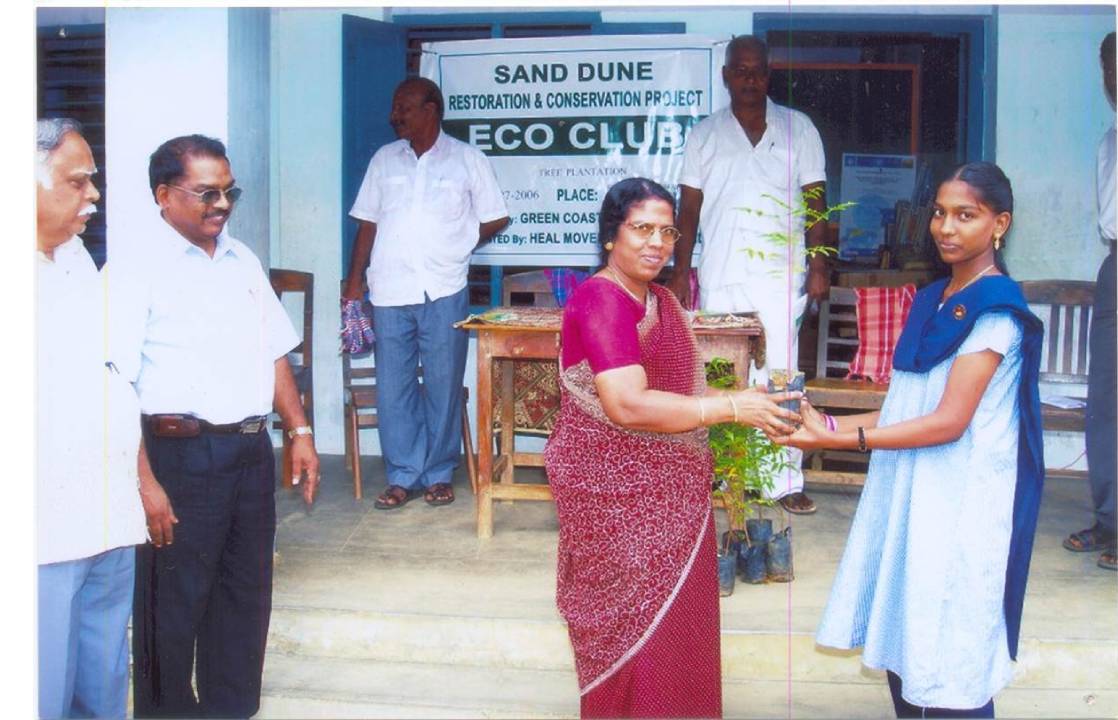
Sand Dunes as a barrier to Disaster Risk Reduction:
- India has a coastal line of 6,090 km.
- Tamil Nadu has a coastal line of 1,100 km.
- Sand dunes are important to;
- Prevent Natural Disasters from marine environment.
- Enrich the Biodiversity to strengthen the ecology of marine environment.
- Absorb and retain rainwater for flora and fauna to flourish and cherish.
- Prevent sea-water Intrusion;
- Breeding ground for animals like Turtles, Crabs, etc.
- They Contribute fisheries resource
- Livelihood for Sea shell collectors
- Places of recreation
- Sandy fauna, Flora Economical and Ecological Value
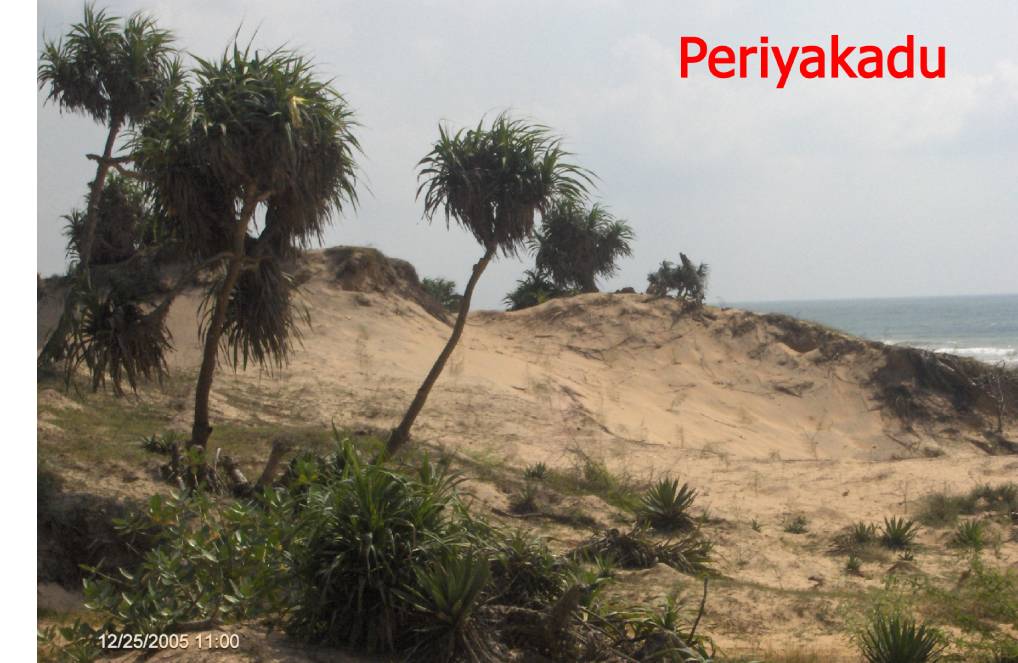
Sand Dunes Formation and sustenance:
- Sand dune is the outcome of deposit of sands in the shore of the sea by tidal waves.
- It is a temporary phenomenon.
- It offers protection to the human inhabitants from sea related disasters.
- It is a natural barrier.
- The naturally formed sand dunes protected the coastal inhabitants from tsunami.
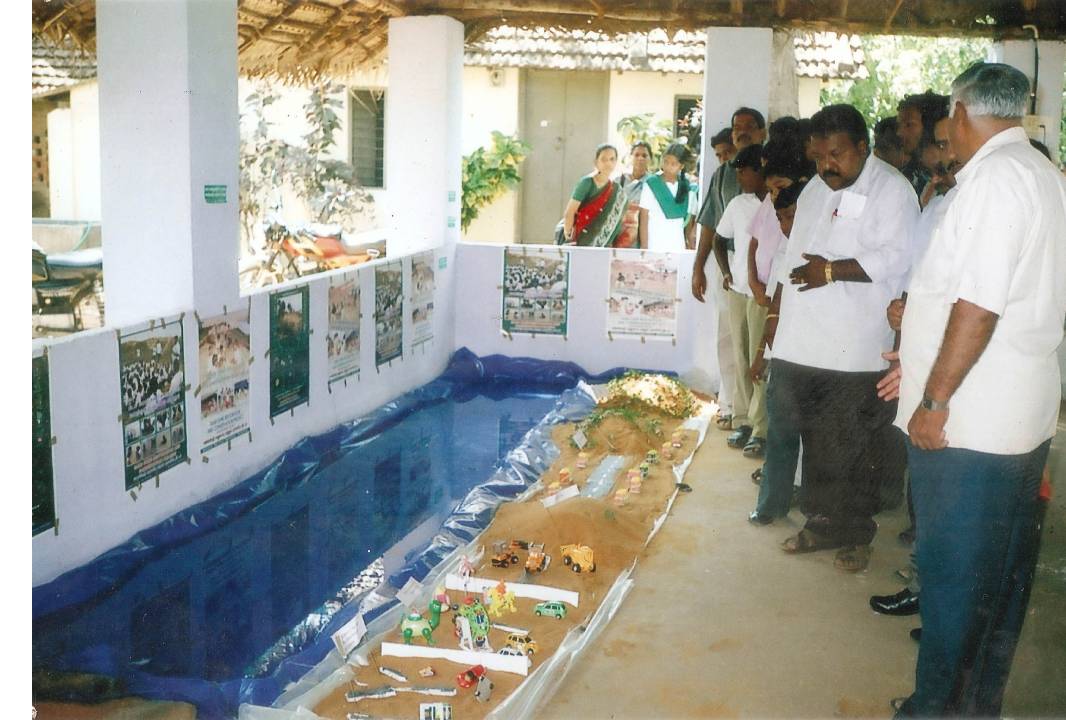
Human interventions on sand dunes:
- Urbanization
- Location of Industry
- Aquaculture
- Mangrove Destruction
- Mining
- Tourism
- Loss of Biodiversity
Benefits of Sand Dunes:
- Protect humans and animals from the impact of Tsunami, sea erosion, high tides, sea-water intrusion, cyclones, etc.
- Absorb and retain rainwater underground.
- Function as breeding grounds for marine species.
- Stabilize specific plants for restoration.
- Prevent sea water during high tide waves from entering into the coastal villages
- The sponge effect absorbs and retains the rain water during monsoon.
- Plants found on the Sand Dunes such as Adambas, Thazhai, Cynodon dactylon (Ravana’s mustache) prevent soil erosion from wind.
- The coastal plant absorbs Carbon-dioxide and emits oxygen that improves the environment.
- Useful as natural platforms to dry fish.
- Sand Dunes with natural vegetation balance the eco system.
- Techniques of sand dune stabilization
- Protection against biotic factors.
- Creation of barriers (mulch) from crest to the heel of dune, across the wind direction.
- Fertile ground for vegetative cover of xerophytic trees, bushes and grasses.
- After the above has been completed, dunes have to be properly managed.
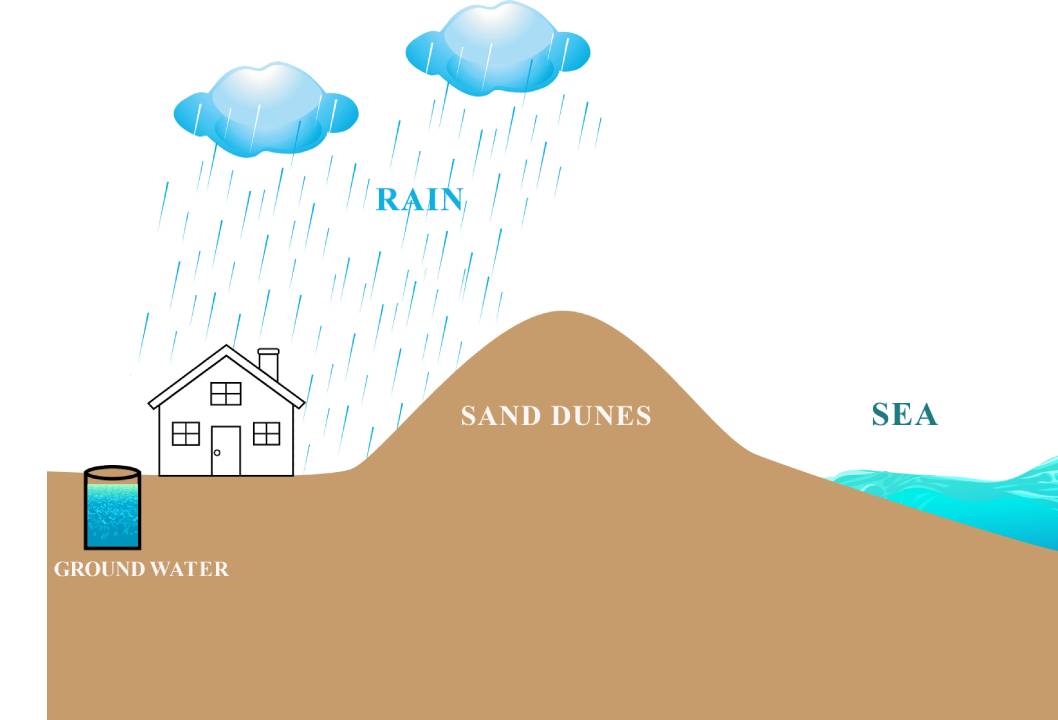
Impact of construction of groins:
- When sand dunes are destroyed, the necessity for constructing groins in the sea shore arises.
- Constructing groins in the sea shore leads to the destruction of other natural resources affecting the livelihoods of sea shell collectors.
- Sand mining affects bio diversity.
- Construction of groins involve wastage of huge money, time and manpower.
- All the advantages of sand dunes are lost as a result of constructing groins.
- The risk of natural disasters is increased when sand dunes are destroyed.
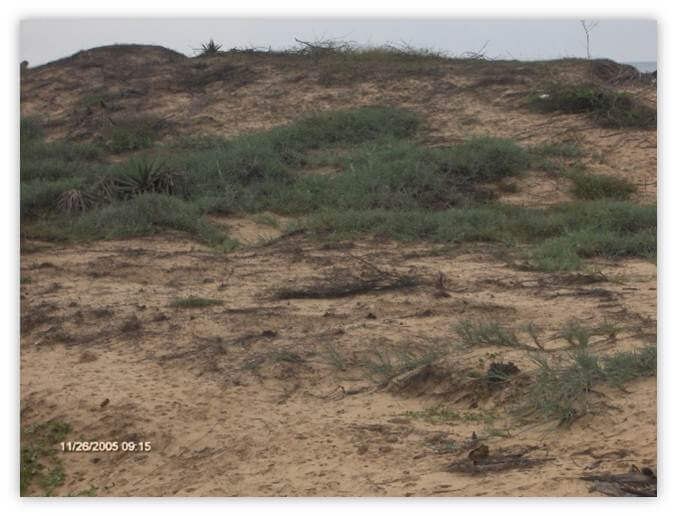
Activities Carried Out:
- Formed village and district level Greening Committees with representation from natives, children, women and key stakeholders.
- Trained natives and members of village level Restoration and Conservation Committees on sand dune’s restoration, conservation and management.
- Community participated in zonation of the existing sand dune into Pioneer, Middle-shore and Backshore zones.
- Identified appropriate species and propagated in the respective zones.
- Promoted special curriculum for the children on eco-system, sustainable management and knowledge on marine biodiversity through Eco-clubs at the school level.
- Children and women participated in the presentations at the village and district levels, common meetings and specialized seminars.
- Excavated accumulated and unwanted sand in the entrance of Manakudi estuary and consolidated with vegetation activities.
- Undertaken and accomplished pollution free practices of life style and livelihood exercises.
- Taken steps to preserve sand dunes as natural barrier in coastal natural disasters.
- Displayed board installation marking the risk, vulnerable group and opportunity map.
- Awareness generated on the identifiable benefits of the plant species.
- Show-cased environment restoration and safer living practices at the district level.
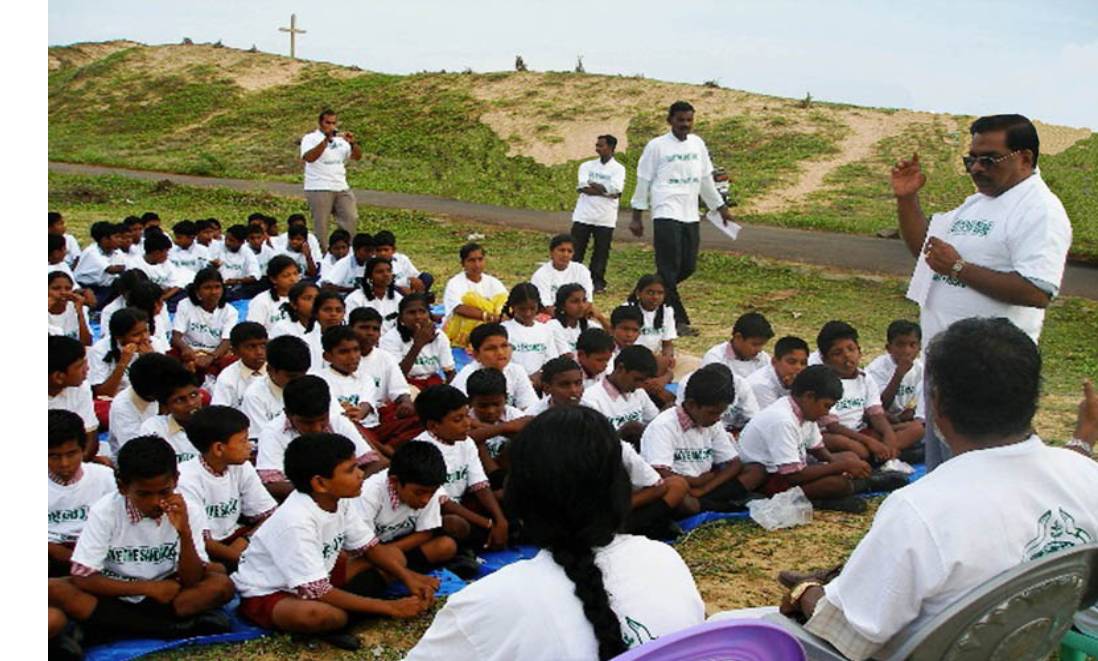
Key Achievements:
- A District Level Greening Committee consisting of 22 Environmental Scientists is functioning with the objective of promoting greenery along the coastal belt and in preventing sand mining and smuggling.
- In most of the coastal villages, sand dune restoration committees are functioning.
- These committees meet twice a month to discuss the problem of sand smuggling in each of the villages.
- A District level Greening Committee is functioning with the objective of promoting greenery along the coastal belt and in preventing sand mining and smuggling. A child from each village, a woman representative and Kanyakumari district environment scientists constitute the Greening Committee.
- In 8 schools along the coastal belt, Eco-clubs active in promoting environmental education, conservation of sand dunes and create an eco-friendly generation.
- In addition, these eco- club members are planting and maintaining neem saplings.
- They have the knowledge on the method of planting the saplings and maintaining them.
- This paved the way for capacity building, leadership training and environmental education, which are the outcome of this process.
- Training on Sand dune restoration is an ongoing process. Sand dune models are displayed to make the students aware of the uses of sand dunes and its importance.
- Coconut saplings are grown by eco clubs as a part of the nursery raising program.
- Eco-club members from three schools have exposure visit to Periacadu sand dune and learnt the uses and the medicinal value of plants grown on the dunes.
- Leaflets are distributed among the students. They also planted saplings.
- 5 vermi compost pits are in place in five schools of Pozhikkarai, Kesavanputhenthurai, Puthenthurai and Mela Manakudi (2 nos).
- Performed street plays and sung songs on sand dunes at public meetings in villages along the coastal belt to protect and restore the sand dune and to promote the plant species on the sand dunes.
- These activities inhibited a sense of conservation of sand dunes among the coastal public.
- Exhibitions were organized at Schools.
- Sand dune conservation and restoration models are exhibited by the Eco-club members in the district level during the science exhibitions.
- This has given way for the development of imagination and originality of thought in the subject by children.
- Nursery development for growing the species of plants that grow in the sand dunes.
- From the project, seedlings/cuttings/vegetative propagation has been raised for different plants like aloe, pantanas, calotropis and ipomeas.
- These seedlings are being distributed to the students and planted by them on the sand dunes.
- We have published a book on sand dune usage and importance titled “Perumanal Ulagam” (World of Sand Dune).
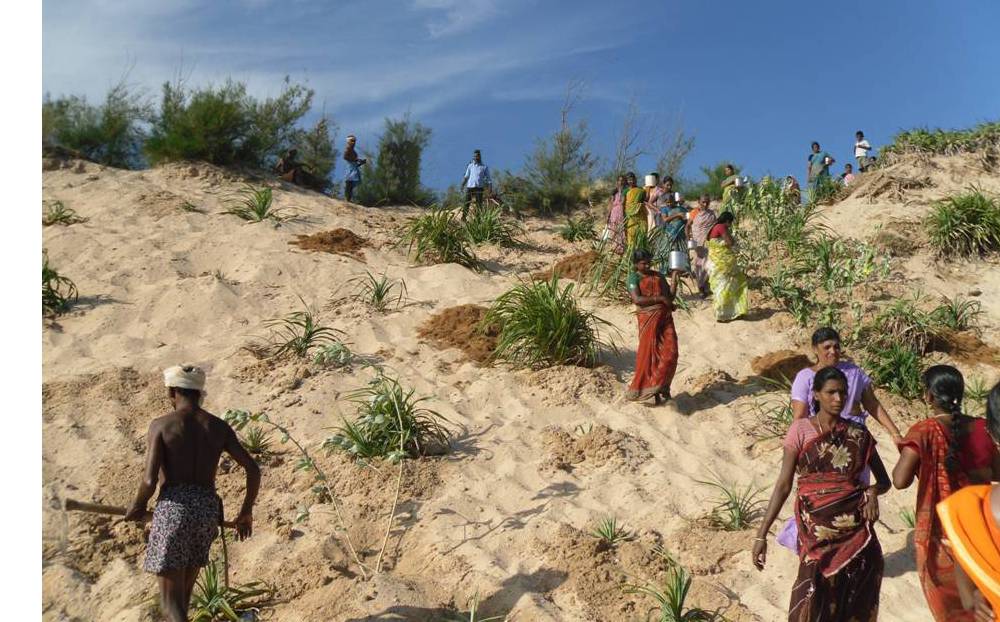
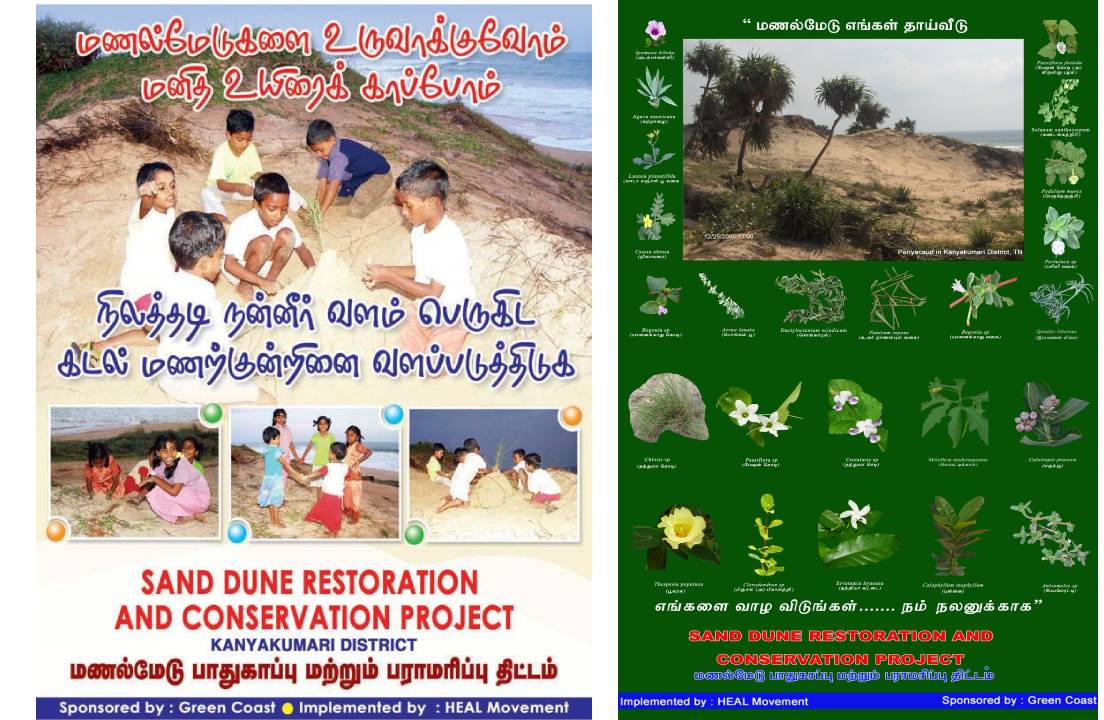
Uniqueness of this project:
As ecological conservation and preparedness has been talked 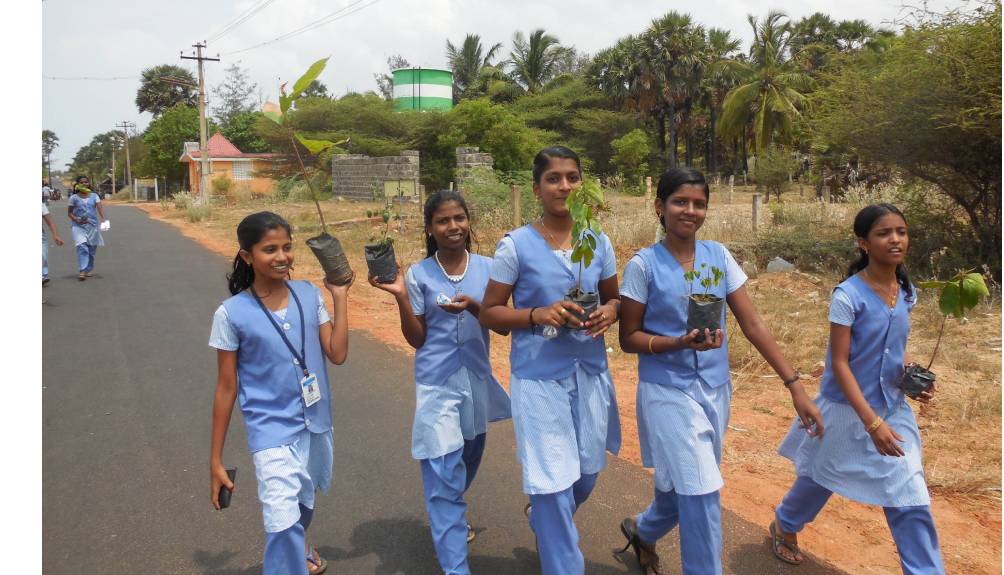 about at a higher level, this project ensured the participation of the local community especially with children, youth and women at the forefront to take initiatives for the cause of climate change and ecological conservation.
about at a higher level, this project ensured the participation of the local community especially with children, youth and women at the forefront to take initiatives for the cause of climate change and ecological conservation.
A concept of ecological child rights emerged through this process that captured the thoughts and actions of children contributing towards ecological conservation. This involves the rights of the children to strengthen the ecosystem which enables the healthy livelihood and existence of the children. This can be defined as rights of the children to conserve the ecosystem and strengthen the natural resources for the needs of the children.
